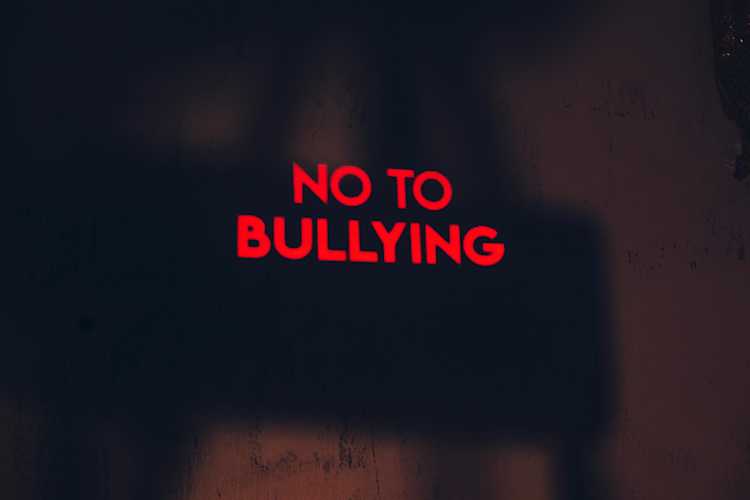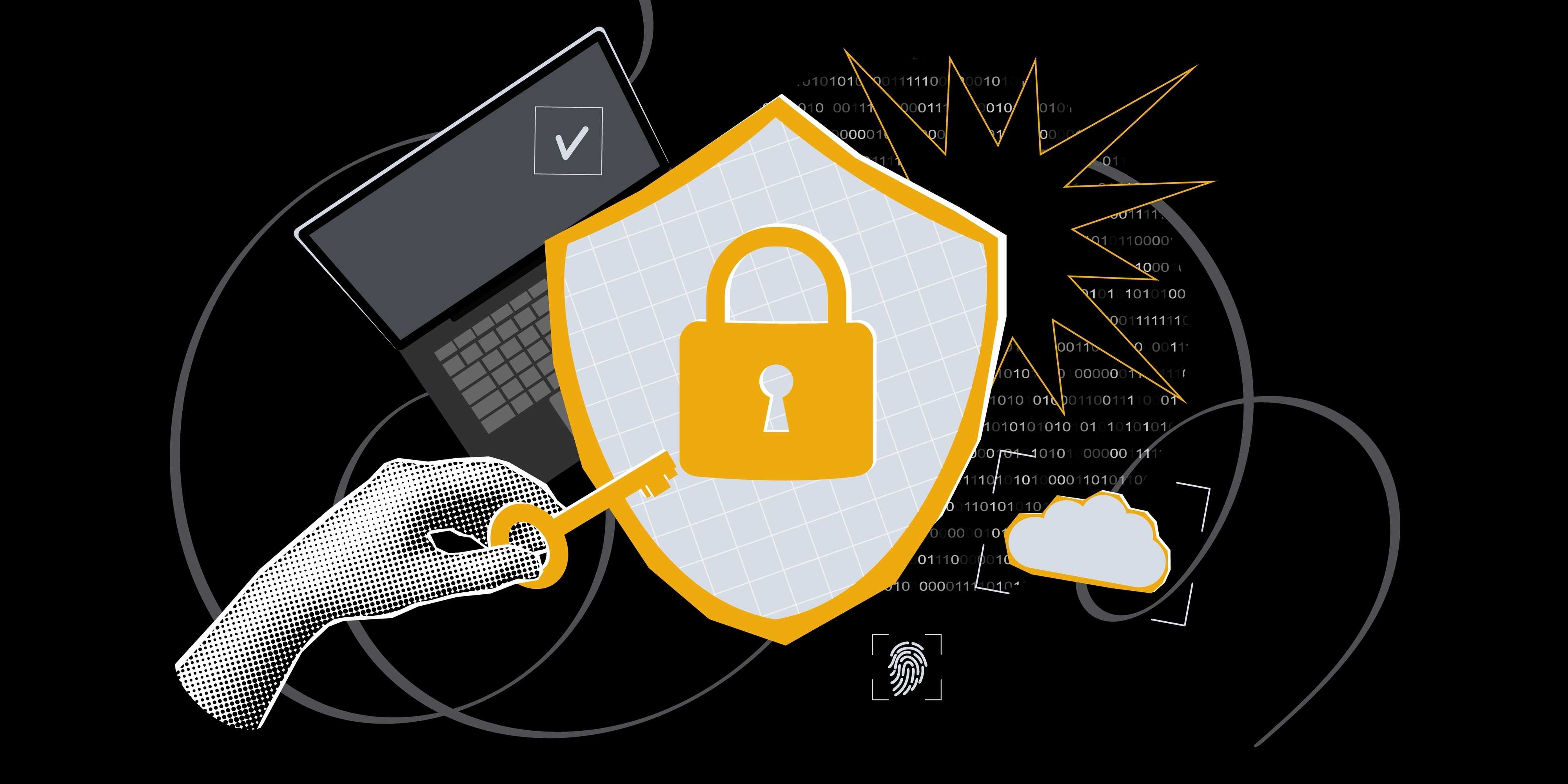Cyberbullying in Schools: A 2025 Guide for Educators

by

Bec May
It may be hard to believe, but cyberbullying has been part of the internet for two decades.
And while the term may not have changed, the methods, means, and scale of harm have evolved dramatically.
In 2005, the internet was a wildly different beast. Social media was in its infancy (Bebo, anyone?), smartphones weren't in every student's pocket, and most young people accessed the internet under the watchful eyes of teachers and parents in shared spaces.
Fast forward to 2025, and everything about how young people interact has shifted. With increasing digital opportunities to connect comes increasing opportunities for harm. Bullying no longer stops at the school gates. It follows students home, into their bedrooms, and into their private group chats. It hides behind silence, curated playlists, coded messaging that adults don't understand, and in apps you’d never suspect.
It used to be easier for schools to see bullying coming. A conflict would brew over days. Notes would pass hands. A plan would make the rounds, and nine times out of ten, word would hit the staffroom before anything escalated. Teachers had the chance to intervene, check in, and de-escalate.
Nowadays? The same harm can unfold in minutes with just a smartphone and a Wi-Fi connection. And many teachers admit they are not in the loop when it comes to the latest tactics and what they should be looking for.
Based on the latest research, this article will take educators through everything you need to know about cyberbullying in 2025, and how you can teach young people to confidently manage their online experiences and reduce the risk of cyberbullying and its harms.
Cyberbullying vs IRL bullying: What's the difference?
Face-to-face, 'traditional' bullying is relational and can include harassment, threats, intimidation, and name-calling.
Traditional bullying is usually limited by space and time, for example, during school hours and in the playground, giving the target (and caregivers) a sense of predictability. This means that when the target is not on school grounds, during school hours, there is a chance for some relief from the bullying.
Cyberbullying, on the other hand, while mirroring the above in-person harms, exists at scale, with harmful content and communication proliferating in minutes across social media platforms. It can occur 24 hours a day, 7 days a week, 365 days a year. It can spread quickly and become public or even viral, exacerbating the victims' feelings of shame and embarrassment.
More extreme, mutated forms of cyberbullying use digital platforms in covert ways to target peers, often causing extreme emotional distress:
Coercive tactics that use usual visual content as a weapon; think coercing a teenager into sending a nude image, or creating deep fake pornography with another student's image.
Tracking and surveillance-based control
Freezing people out on social media for exclusion and/or punishment
Mass pile-ons in group chats
Research shows that while traditional bullying is typically premeditated, cyberbullying is often impulsive. This makes it less predictable and harder for educators, parents, and other caregivers to mediate.
Cyberbullying is also 'easier' on the offenders, which is maybe what makes it so dangerous. Hiding behind a computer screen has been shown to decrease the bully's empathy towards their target. Without a real-time reaction to their posts or texts, cyberbullies are desensitised, with no real sense of when they have gone too far. Add to this the ability to anonymise oneself online, and we are in dangerous territory.
Social media use in teens and children: What cyberbullying statistics show
Globally, most social media platforms set their minimum age at 13. The UK has just lifted this to 16, as will Australia in December under the social media ban. Despite these restrictions, the data shows a different story, with many teens joining social media platforms long before they become teenagers.
52% of children aged 10–15 report being cyberbullied, with a jump to an alarmingly high 81% for trans and gender diverse children.
Young adults are most likely to experience cyberbullying on these platforms:
Online video games: 22%
Snapchat: 20%
Messenger Kids: 16%
Instagram/Facebook: 6%
YouTube: 3%
TikTok: 4%
Girls are more likely to experience cyberbullying via Snapchat, Messenger Kids, and text messaging.
Boys, on the other hand, are more likely to be bullied in online games and on YouTube.
Cyberbullying is relational and peaks at certain times in the school calendar
Data shows that there are clear trends about when cyberbullying is at its worst throughout the school year:
There is less cyberbullying during the holidays: teens are more likely to be engaged with their friends and other forms of entertainment
Expect increases late in term 1 and a peak in Term 3: Parents and educators should be on alert during these periods, where restlessness and peer group restructuring mean children are more likely to experience cyberbullying
1/3 of eSafety cyberbullying complaints occur in the teens' first year of high school: Cyberbullying during this high-stress, fractious time can lead to serious self-esteem and mental health issues, which can persist well into the user's future.
Platform-specific cyberbullying
As you would expect, the main platforms used for cyberbullying are the usual suspects: TikTok, Snapchat, Messenger, you get the drift. What you may not expect is how these platforms are being used, nor the unexpected sites that pop into the mix. Let's take a look.
Using Google Forms/Docs and Spreadsheets to create polls
These apps, which are commonly used in Australia for educational purposes, are now being used by teens to create anonymous polls for peer ranking, usually involving rating girls' perceived attractiveness and dateability. These are presented in formats such as Rate My Mates, Hot or Not, and Ship and Dip. A prestigious private school in Victoria recently suspended three boys over a spreadsheet rating the attractiveness of female students, which used offensive terms and referenced sexual violence.
Creating an Etsy store to make and sell merchandise
One of the most visible forms of harassment involves teens taking an image of their target and creating and selling merchandise, which often has additional slurs and disparagements accompanying the victim's image. This is conducted through sites like Etsy.com, where users can easily set up an online store with little to no technical or sales knowledge.
Using Spotify to create targeted playlists
Teenagers have started to curate and share Spotify playlists featuring tracks and music videos whose titles are abusive and often themed around their target.
Depositing money (and abuse) via banking apps
The most common type of advice on how to deal with cyberbullying is to block the bully and formally report their behaviour to the platform in question.
So what do some cyberbullies do when they are blocked from commenting or messaging their target's social media page? Astonishingly, some teenagers refuse to take no for an answer, with reported cases of some bullies sending small amounts of money to their victims so they can write abusive messages in the description box.
The rise of AI-driven cyberbullying
There is no doubt that as cyberbullying evolves, AI accelerates the harm. 2025 has seen an alarming rise in bullying tactics that leverage AI tools to humiliate, manipulate, and impersonate in ways that weren't possible even last year.
These are the four most common AI-driven bullying tactics emerging in schools:
Body-based insults: AI-altered images, such as the defunct TikTok chubby filter, are used to body shame and humiliate targets.
Deepfake images: AI can now generate entirely fake videos of a student doing or saying something they never did. These are then shared in group chats or posted publicly to spread rumours or create false narratives.
Voice cloning: Students are using AI to mimic classmates' voices. The generated audio can make someone sound like they said something offensive or embarrassing, with no easy way to prove it wasn’t real.
Harassment material: AI chatbots are being used to generate spam, threats, and hate speech, flooding a student’s inbox or comments across platforms.
Sexualised abuse
Most schools are prepped to deal with fights, slurs, and physical intimidation. Far fewer are equipped to respond when a student reports being deepfaked, blackmailed, or coerced into sending sexual content. This is now a major problem with 40–50 per cent of students reporting being aware of deepfake content circulating at their school, including fabricated nude images of classmates created with AI tools.
Sexualised abuse runs the full gamut of cyberbullying behaviours:
Sexual harassment: Includes unsolicited explicit messages and/or suggestive comments
Sexual shaming and outing: Creating rumours (whether true or untrue) about sexual behaviours or orientation
Sexual coercion and sextortion: Threatening to share images or information unless the victim complies with demands for sexual acts, images, or money. This is usually seen from older predators who often reach out to the child on anonymous chat apps, posing as teen boys or girls.
The effects of these kinds of sexualised abuse can be devastating, with teens who are affected often feeling scared, embarrassed, and ashamed to seek help. Even more concerning, when these cases involve older predators, they can escalate into declining mental health, kidnapping, and in some cases even death.
The eSafety Commissioner recently released a Respond document detailing how schools should address image-based abuse. Here are the key takeaways:
Deepfake nudes = image-based abuse: Schools need to be clear on the fact that creating and sharing nude/sexual generated content is not a victimless crime; it is illegal, harmful, and abusive. This understanding should be hardwired into the schools' existing policies relating to student and staff behaviour, such as policies addressing bullying prevention and response, student protection, code of conduct, and ICT acceptable use.
Schools must respond, even if the content isn't shared: Creating or possessing deepfake images or videos, even if they are not shared, still demands a school response that includes support
Under-18s can be charged for deepfake creation: Though the rules on this are state-dependent, with some states criminalising the behaviour and others using restorative justice, under-18s can be charged, and the legal landscape is tightening fast.
All school staff need professional learning: Research shows that non-teaching staff are just as likely to be approached for guidance on deepfakes. Training must go beyond teachers.
Assign a designated response lead: Schools should nominate a trained leader to identify and coordinate responses confidentially, with support from wellbeing or critical incident teams.
Support the victim, not the school's image: A trauma-informed response is critical. Victim dignity, privacy, and agency come first, not the school’s reputation.
Act early, communicate clearly: Notify families, log police and eSafety reports, and secure evidence (without further distributing it).
A new coded language of harm (Know your emojis)
Gone are the days of simple notes being passed in class with messaging like 'meet me behind the shed for a fight' or 'Karen is a dork'. Today's language of harm is coded to mock, exclude, and threaten- all while eluding adult comprehension.
Here's what adults should be looking out for:
Sexualised abuse:
🍜 : Wanting nudes
👀 : Sending or receiving nudes
🔨 : Sexualised activity
Mocking someone's appearance:
🤡: Calling someone a clown/joke or plain
🐷: Making fun of someone's appearance/weight
Exclusionary abuse:
🎯: Spot on comment, agreement, or being called out. Often you used to target someone.
👻: Signifying someone is 'dead' to them/invisible
Mocking someone for their interests:
📉: Indicates something flopped or was embarrassing
💀😂: 'Dying of laughter', laughing at another's expense
Challenges to detecting cyberbullying
As cyberbullying has mutated and spread, detecting these online behaviours has become increasingly elusive. Teenagers are hesitant to report online harassment and end up suffering in silence, not knowing who to talk to about their safety.
Several factors exacerbate boys' and girls' hesitancy to report when they, or one of their friends, are being bullied online:
Harm is misunderstood: Witnesses may misinterpret the cyberbullying, not fully understanding the harmful impact it is having on the friends and peers
Behaviour is hidden behind anonymity: When a perpetrator pretends to be different people, creating anonymous or fake profiles, it can be difficult to identify the person who is cyberbullying
Fear of losing access: Many kids report not reporting online bullies for fear of parental overreaction and subsequent restrictions on their time online.
Many young internet users also perceive that adults don't understand today's apps and feel like adults are not equipped to deal with cyberbullying. It's this kind of 'what's the point?' attitude that is keeping bullies safe and targets silent, creating an environment where harmful behaviour thrives.
How can educators help cyberbullying victims?
Children need to feel that the adults in their lives, including their teachers, are across cyberbullying, from what it looks like to how to de-escalate it without isolating victims. Educators need to arm themselves with as much information as possible to recognise warning signs, respond appropriately, and connect students with the right support before harm escalates.
Know the risk factors
Much like physical bullying, there are certain factors that increase a teen's risk of being bullied online. Knowing the factors that increase vulnerability can help educators provide access to the support and services to help minimise both the chances and the effects of cyberbullying. Risks include:
Socio-economic status(SES): Those with a lower socio-economic background report double the rate of cyberbullying than those with a higher SES
Behaviours and truancy: Those who engage in disruptive behaviours and truancy also show increased vulnerability
Marginalised groups: Students who identify as LGBTQIA+, are neurodivergent, or have disabilities face a higher risk of online harassment, often due to prejudice, social isolation, and targeted abuse.
High-quality relationships with trusted adults are a strong protective factor against both traditional and cyber bullying. Teachers should take a proactive approach to create safe spaces for victims to speak openly, intervene early, and provide targeted online safety education for the groups most at risk.
Where to next? Cyberbullying resources for schools
Cyberbullying in 2025 spreads faster, is more covert, and potentially more damaging than at any time in our past. While it probably won't ever be eliminated entirely, we can work to reduce its impacts long-term. How quickly schools detect, how effectively they respond and how supported students feel throughout the process may make all the difference.
This Bullying No Way Week, take the time to:
Review your school’s cyberbullying response policies.
Ensure all staff — teaching and non-teaching — know how to respond to reports.
Refresh your understanding of the latest online risks and platforms.
Deliver targeted digital safety education to students with heightened vulnerabilities.
Further Resources for Educators
Bullying. No Way! — Australian Government
https://bullyingnoway.gov.au
eSafety Commissioner — Cyberbullying
https://www.esafety.gov.au/educators
Headspace Schools — Be You Program
https://beyou.edu.au
Office of the eSafety Commissioner — Image-based Abuse
https://www.esafety.gov.au/key-issues/image-based-abuse
ReachOut Schools
https://schools.au.reachout.com
ThinkUKnow — Australian Federal Police
https://www.thinkuknow.org.au
Are you struggling with the network visibility needed to support cyberbullying victims?
Fastvue Reporter for Education turns your firewall data into clear, actionable insight into online student behaviour, helping you spot risks early and act with confidence.
Don't take our word for it. Try for yourself.
Download Fastvue Reporter and try it free for 14 days, or schedule a demo and we'll show you how it works.
- Share this storyfacebooktwitterlinkedIn

